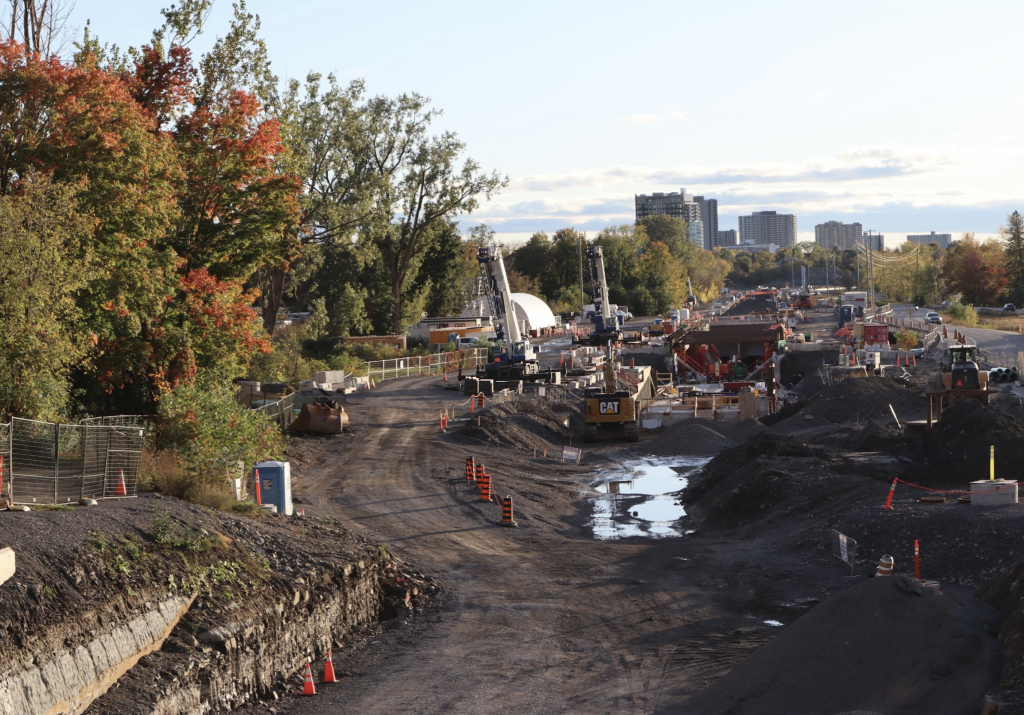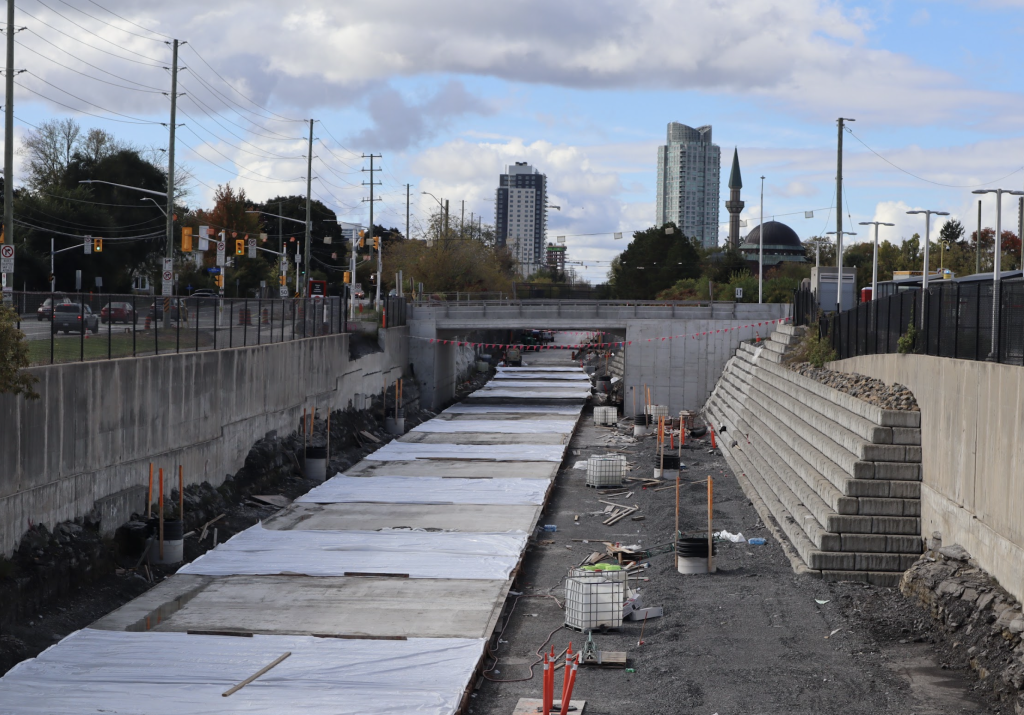By Charlie Senack
The news isn’t surprising. The Phase 2 Trillium Line of Ottawa’s problem-plagued light rail transit system won’t be launched this year.
That expansion of Ottawa’s original O-Train line was initially supposed to open in summer 2022. Then the launch date was pushed back over a year until November 2023.
OC Transpo’s top boss Renée Amilcar said that given where construction stands, the north-south line between Bayview Station and Riverside South won’t be operational until spring 2024. While no firm date has been given, she’s hopeful for residents to be riding the rails in April. Amilcar said OC Transpo wants to be as “cautious and prudent as possible.”
“This decision will provide city staff and the maintenance team with a longer runway to finalize training and fully exercise the system before it opens to the public,” she said at a light-rail transit subcommittee meeting on Sept. 29.
Why is LRT Phase 2 delayed?
In order to launch the Phase 2 service, nine of the Alstom and Stadler diesel trains in its fleet need to be properly tested and drivers will need to be trained. Neither of those steps are possible right now.
While the train testing will begin later than expected, some councillors and city staff are seeing the benefit in the delay. It means testing will be done over the winter, a period where Ottawa’s Phase 1 Confederation line has faced various challenges.
In January, immobile trains were stuck for days after bouts of freezing rain shut down the system. Then in April, firefighters had to help rescue trapped passengers from one of five stopped trains. Ice buildup caused problems with the electrical connections between the overhead wires.
To stop that from occurring again, the city is looking at anti-icing strategies, including an anti-ice chemical being tested. It aims to prevent ice buildup before it occurs.
If any similar issues occur with the Trillium line, experts are hopeful it would be picked up on before the system opens to the public.
“As the handover time has slipped, it gets us closer and closer to the middle of winter,” said Michael Morgan, manager of rail construction. “Absent sufficient time for training [and] absent sufficient demonstration of running the system before winter, we didn’t feel it was appropriate to push this thing to open on Jan. 15 in the middle of a winter snowstorm. Let’s make sure we’re 100 per cent on training. Let’s make sure we’re 100 per cent on the system.”
Kitchissippi coun. Jeff Leiper agrees with this assessment and said he believes the city has learned from their mistakes made with the launch of Phase 1.
“The temptation [for many] is to become very angry, start demanding accountability, start demanding that the train be open, and that is not helpful,” he said. “We learned our lesson from Stage 1. It will have to open when it opens, when it’s safe, and when it will run properly.”

Phase 2 of the Confederation Line east to Trim Road is also delayed and not expected to be completed until 2025. The western extensions to Moodie Drive and Algonquin College won’t be ready until 2026.
Leiper said the recent Hydro Ottawa strike delayed some work from being completed, and train operators being diverted to buses might also be to blame.
“At Carling station, we saw a delay in being able to test some of the systems because it wasn’t energized. That was the case at one other station as well,” he said. “The pivot to get drivers out of train operations to drive buses during the LRT shutdown may have also been a factor.”
While tentative plans have been in the works to get the Confederation line to extend further out to Barrhaven, Kanata, and Stittsville within the next decade, that no longer looks realistic. Instead councilors are mulling over stepping away from Phase 3 and instead prioritizing bus rapid transit to light rail stations.

